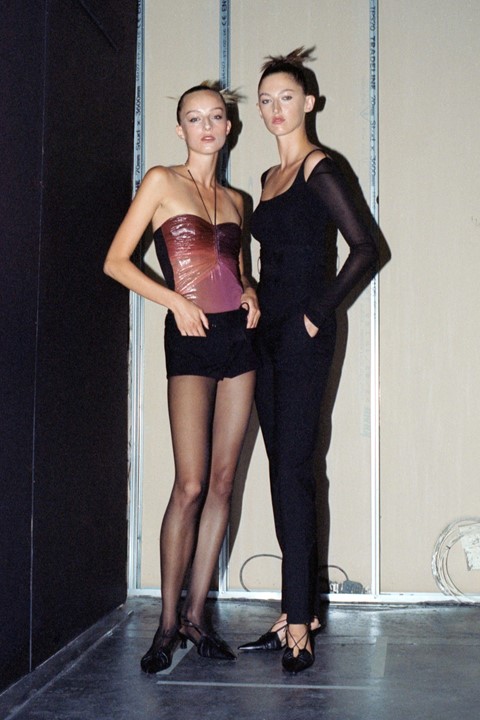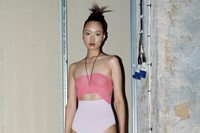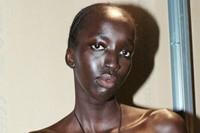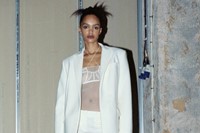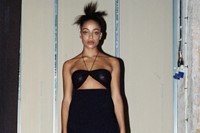The Albanian-born designer opens up about her Spring/Summer 2022 outing – a clear and confident show which was “about the clothes and about the girls”
Somewhere between lingerie and evening wear, Nensi Dojaka’s barely-there designs are at once delicate, minimal, and strong. Her confident and singular approach to womenswear has proven the Albanian-born, London-based designer and Fashion East alumnus to be one of today’s most exciting new talents, and, in Paris last week, saw her awarded the prestigious LVMH Prize – a career-altering €300,000 endowment and bespoke one-year mentorship programme. “I’m still waiting to enjoy the moment,” Dojaka tells AnOther in the busy days leading up to her debut solo show, which was held this weekend at London Fashion Week.
The collection marked an evolution of her work to date: “more symmetrical, more resolved,” and “more mature.” Balancing her signature, feather-light cobweb shapes with structured tailoring, the offering was above all a celebration of the female form – graphic spaghetti straps framed low-scooped backs in delicate criss-crosses; meticulously layered tulle formed floral motifs against bare skin; and cumberbund cigarette trousers carved out hourglass silhouettes. There was also a new sense of lightness to the collection, which featured, amid Dojaka’s usual muted palette, an array of earth tones and petal-pink hues inspired by the paintings of Francis Bacon. Such airiness, Dojaka says, is reflective of the hopeful spirit of this current moment, as we finally start to enjoy lighter times.
Here, speaking in her own words, the designer tells AnOther about her Spring/Summer 2022 collection.
“I think that the collection in general feels very light and positive. It’s kind of showing what we’re all feeling now; because we are feeling more hopeful and things are moving. So I think the collection does show that. It’s very light – it’s summery, compared to what I normally do. [Laughs.] There’s a bit of pink there as well, which lightens everything up. The feeling is quite airy.
“I’ve looked a lot at the 90s, I’ve always said that, but now it’s widening a bit. This time, one of the main inspirations for the collection was a picture from the 60s that I found in a book – and it’s not about the silhouette, it’s just about this one detail.
“I always have a very concrete starting point, so I look at something very visually – whether it's a fashion image, a painting, or an artist. If I find an old picture and I really like the silhouette of the trouser, then the pattern cutter starts to work on it. Everything else I drape on the mannequin first. I take a lot of pictures, I change it up a bit, maybe drape again. Normally, it starts off being really messy, so I clean it up a lot – I probably remove 70 per cent of what was there, and then I leave just the best part of it.
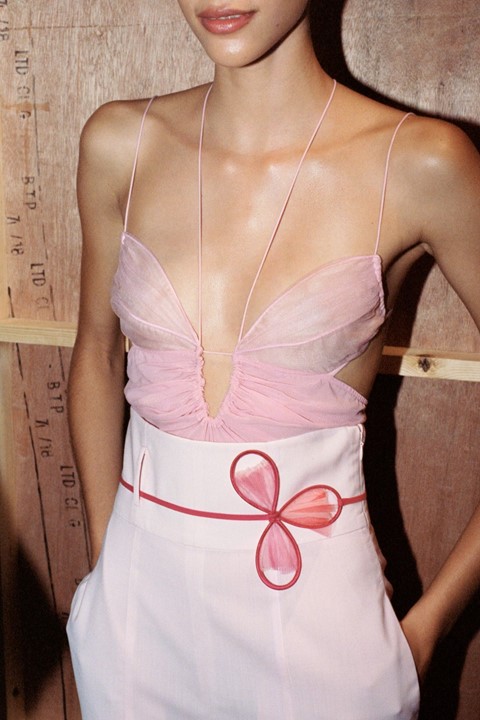
“And the rest is simple. I think it’s very important to keep the strong details but also make it very clean, because this is a big part of the brand: in a way, it does look minimal, even though there is a lot happening in small details.
“Because of my background in lingerie, I’m always thinking about the body, and I always say to everyone that I love certain parts of the female body, like the collarbones and the back. I think they’re beautiful, and I like to show those parts that I think should be shown ... It’s about keeping the balance, but making the woman feel beautiful and showing off the body.
“[The show’s focus is] just beautiful, clear clothes … With me, it’s never theatrical. It’s just a beautiful show about the clothes and about the girls. Because that’s what the brand is about: the women and the clothes.”
